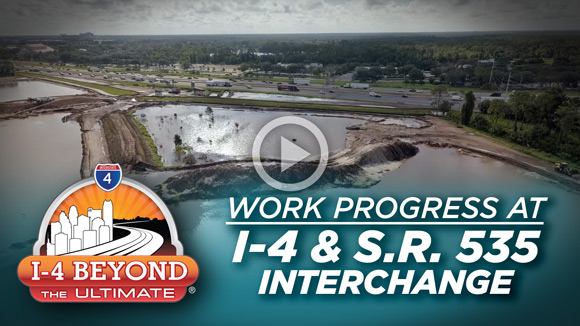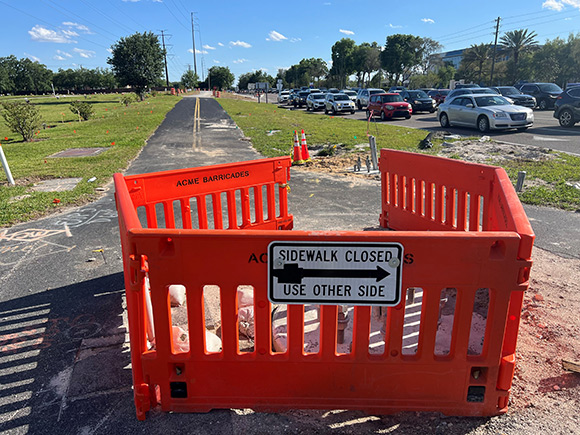Employee Spotlight: William Sloup, Project Administrator
Construction crews continue to work hard on both the Interstate 4 (I-4) and U.S. 17-92 interchange and the County Road (C.R.) 46A (HE Thomas Jr. Parkway) and Rinehart Road intersection projects as improvements continue along I-4 in Central Florida. However, for work to continue smoothly and with minimal issues, strong leadership is required.
William Sloup, the project administrator on both the U.S. 17-92 and C.R. 46A projects, rides and/or walks the project sites daily to verify the traffic-control devices and erosion-control measures are installed and functioning as intended. He ensures the inspectors have all the tools they need to be successful for the day; reviews the inspectors' daily work reports for completion and accuracy; and facilitates meetings as needed to ensure action items are being reviewed and responded to in a timely manner, so the contractor’s schedule is not impacted. He also coordinates with utilities and local agencies to ensure communication with the contractor. William's work on the project helps prevent potential conflicts with other nearby construction and can help the team avoid mistakes that could lead to damage to utilities or private property.
William grew up in the Orange City/DeBary area of Central Florida and attended Deland High School. He earned his associate’s degree at Seminole State College and then graduated from the University of Central Florida, where he received his bachelor’s degree in civil engineering.
“As my college career progressed, I never found another path that sparked my interest and became more and more interested in civil engineering,” he said. “Once I graduated from Seminole State and began classes at UCF, I narrowed my focus to transportation for the logical reason that people will always need to travel, so there will always be work.”
William said he previously pictured himself going into design or project development, but this changed at a UCF engineering career fair only a few months before his graduation.
“I decided to take a leap and took interest in construction, more specifically construction engineering and inspection,” he said. “I am glad I decided to go into construction over the other two fields I was previously considering. Every day has something new and unexpected in store, and the time I spent as an inspector out in the field gave me lots of valuable hands-on experience and great memories that I will take with me for the rest of my career.”
William said one of his favorite aspects of his job is that no two projects are the same.
“The scope of work may be similar from project to project, but different contractors and different project locations offer different teams to partner and coordinate with,” he said. “This gives my career a freshness with each new project that you can’t really find in many other jobs.”
William said he takes pride in working on the U.S. 17-92 and C.R. 46A improvement projects.
“I am proud that although these two current projects are my first as a project administrator, I have been successful with developing good working relationships with all parties involved,” he said. “This has resulted in two successful projects with minimal issues or delays and relationships that will last the rest of my career.”
Outside of work, William is a husband to his wife Elena and a father of two boys, ages 3 and 2. “Most days I am building blocks, wrestling, or running outside with them,” he said of fatherhood.
In his spare time, William enjoys playing ice hockey and golf, exercising, and running, and he even got into competitive arm wrestling for a time. He also enjoys spending time with friends.
For more information on William’s projects, visit the I-4 and U.S. 17-92 interchange and the C.R. 46A and Rinehart Road intersection project pages.
|






